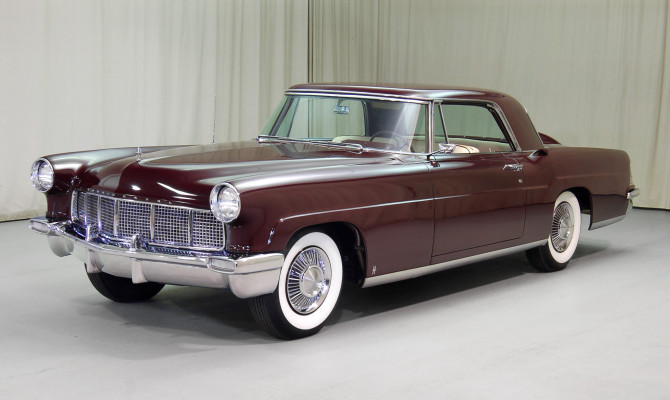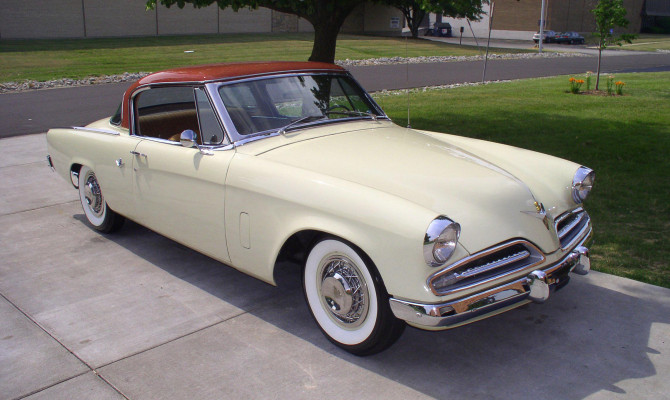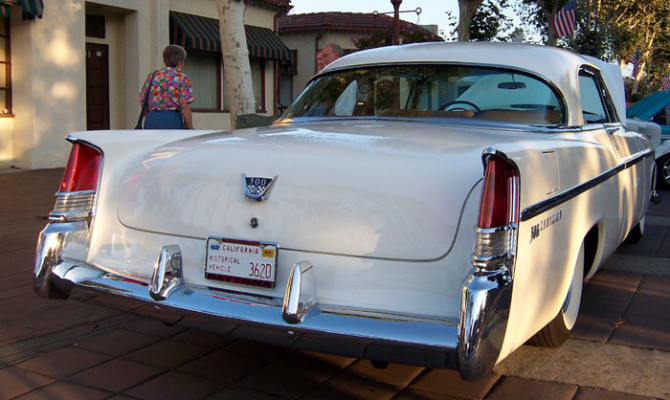“Post-war cars that swam against the stream of fins, scoops, chrome and decals and were memorable for their elegant simplicity…”





Poet Henry Wadsworth Longfellow famously wrote, “In character, in manner, in style, in all the things, the supreme excellence is simplicity.”
And one could argue that the same is true in automotive design. American car design of the 1950s-1970s was beloved for its flamboyance; here are the best from that bunch of years…
1963-65 Buick Riviera
The 1963 Riviera was the result of GM design head Bill Mitchell’s desire to produce something that was a combination of a Rolls-Royce and a Ferrari. Whether he succeeded in that odd mash-up is debatable, but the 1963-65 Riv was a thing of great elegance and simplicity, particularly the 1965 model with hidden headlamps.
Introduced at the height of Camelot, it was as elegant as Jackie Kennedy.
1956-57 Continental Mk II
The Continental was emphatically not a Lincoln, even though it shared the name of numerous products of that division of the Ford Motor Company. For two brief years, Continental was a division unto itself and the Mk II may well have been the most elegant post-war car built in America. Costing the then-unheard-of sum of $10,000 (the equivalent of almost $87,000 in today’s money), the care and craftsmanship that went into each car ensured that Ford still lost money on each one.
Elvis, Frank Sinatra and Elizabeth Taylor were all Continental owners.
1953 Studebaker Regal Starlight coupe
Famous industrial designer Raymond Loewy put together a team of talented designers that included Robert Bourke to design a car like no other of the 1950s. Low, sleek and incredibly elegant, the Regal Starlight is largely forgotten today by all but the most diehard car collectors and fans of the long-defunct Studebaker Corporation of South Bend, Indiana.
1975-79 Cadillac Seville
In a decade not necessarily known for elegance (heaven knows how many high school kids rode to prom in dad’s Seville wearing powder blue polyester tuxedos), the Seville stood out against the odds as a particularly elegant design. Not only was it handicapped by being a product of the 1970s, but it was the first time that a substantial number of Chevrolet components were used in a Cadillac (it shared the same underpinnings as the Nova). But this was no Cimarron. The first-generation Seville was elegant, restrained and every bit a Cadillac. Although it was the smallest car in the lineup, it was the most expensive and it looked the part.
1956 Chrysler 300B
The first of the 300 “letter-series” (the 1955 C-300 was never actually called the “300A”), it was probably the prettiest Mopar design of the 1950s. Its pillarless hardtop design and restrained use of chrome were wildly inconsistent with the over-the-top performance that the car was capable of delivering from its 355-hp, 354-cubic-inch Hemi V-8. It terrorized NASCAR back in the day.
Rob Sass is the vice-president of content for Hagerty Insurance. Hagerty is the world’s leading specialist provider of classic car and boat insurance. Learn more at hagerty.ca
Recent Comments
- { Enjoyed your Forest of Bowland in the BMW X5M, particularly the photo of the BMW in front of the main part of Stonyhurst College where... }
- { Bantam designed the Jeep, not Willy's or Ford. The American military gave the original Bantam prototype to Willys and Ford to copy. There is plenty... }
- { All Escalades come with a 6.2-lilter V8 engine that produces 420 horsepower. A six-speed automatic is the only transmission offered and drives the rear wheels.... }
- { Alexandra is an excellent journalist. }
Popular Posts
- Journey to a ‘Sparkling’ Luxury Okanagan Resort “Four lucky readers will put a Dodge Journey’s weekend-...
- The Need For Speed: Hike Those Highway Limits More than half of those polled believe the province sho...
- Drives-U-Crazy… Erratic drivers. An early morning drive from Kelowna to Vancouver is nor...
- Readers Respond: The Pros and Cons of Increasing B.C. Speed Limits Increasing the speed limits will only increase risk to...
- Honda CR-V Review: The Compact Crossover To Get Things Done The CRV is a very stylish and aerodynamic crossover veh...






